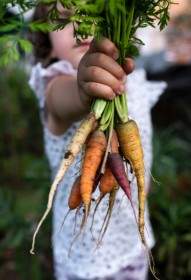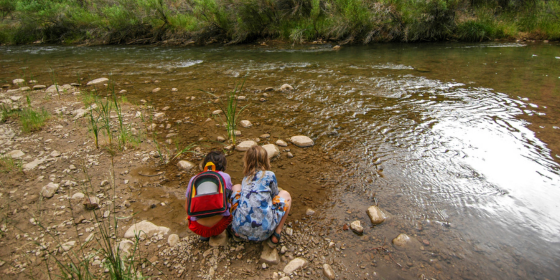Summer Science Experiments
By: Beverly Matoney | The Homeschoool Copywriter
With the lazy days of summer upon you it can be a challenge to keep your homeschooled children engaged and excited about learning. However, the summer months present a wonderful opportunity to dive into hands-on science experiments and explorations that capture the imagination.
From backyard biology to kitchen chemistry, there are countless ways to make science come alive during your summer break.
Getting out into nature is one of the best ways to foster a love of science in your learners. Summer is the perfect time to become citizen scientists and observe the natural world around you.

Need some ideas?
Go on a bug hunt in your backyard or local park, using a magnifying glass to get a close up look at the incredible insects that call your neighborhood home.
Observe butterflies, moths, ants, spiders, and other creatures to learn about their amazing adaptations and behaviors.
Make a simple insect habitat, like a bug jar or terrarium, and watch the mini ecosystem unfold.
How about a scavenger hunt to identify different types of trees, flowers, birds, and other plants and animals?
Use field guides or nature apps to help with identification. Keep a nature journal to draw sketches and record your observations. Get creative with a Nature Bingo card and see who can fill theirs the quickest.
Challenge your children to notice changes in the living things around them over the course of the summer.
How did the plants in your garden grow and change? What new insects or animals appear as the season progresses?
Another engaging summer science activity is setting up a backyard weather station. Collect data on temperature, precipitation, cloud cover, and wind using simple tools like thermometers, rain gauges, and windsocks. Teach your children how to read and record the data, and then analyze the patterns and trends. You can even begin to make predictions about the weather and see how accurate you are.
Similarly, you can set up a moon chart, noting the different phases of the moon. Create a calendar for the month and have your students color in the shaded part of the moon. At the end of the month, label the phases. For older students, have them find and note the position of constellations or planets. There are free apps that can assist with this.
If you have access to a body of water like a pond, lake, or the ocean, spend some time exploring aquatic ecosystems. Use a net to catch and observe critters like tadpoles, minnows, crayfish, and water striders. Investigate the properties of water, learn about water cycles, and discover the amazing adaptations of aquatic life. Don’t forget to let the critters go when you’re done!

Staying inside to beat the heat?
Go on a kitchen science adventure by making homemade ice cream. This classic summer treat provides the perfect opportunity to explore the science of phase changes, states of matter, the role of nutrients, and the systems of measurement.
Let everyone experiment with different flavor combinations and see how they affect the final product. You can also make edible slime, oobleck, or other fun and messy concoctions.
For older students, try encoding recipes by converting the system of measurement. For example, 2 tablespoons are the same as 0.125 cups. Have students use simple algebra to decode recipes.
For budding engineers, summer is a great time to get creative with hands on building projects. Challenge your homeschoolers to design and construct simple machines like catapults, balloon powered cars, or paper circuits.
They can experiment with different materials, shapes, and designs to see what works best. Older students might enjoy tackling more complex STEM challenges, like building a model bridge or programming a robot.
Experiments
Of course, no summer science program would be complete without some good old-fashioned experiments. Here are a few easy and exciting options to try:
- Elephant toothpaste: this colorful, foaming reaction is always a crowd pleaser. Mix hydrogen peroxide, dish soap, and dry yeast to create an eruption of colorful, bubbly “toothpaste”.
- Rainbow fizz: combine vinegar, baking soda, and food coloring in a clear container to make a fizzing, color changing concoction. Experiment with different color combinations.
- Mentos and soda geyser: drop mentos candies into a bottle of soda and watch it erupt into an impressive geyser. Explore how the shape and size of the container affects the reaction.
- Paper circuits: use copper tape, coin cell batteries, and LED lights to create simple circuits on paper. Students can design their own light up cards, bookmarks, or other creations.
To make your summer science experiments more engaging and interactive for your homeschoolers, incorporate the senses, use the scientific method, and include plenty of hands-on opportunities.
Encourage your children to use their senses of sight, smell, touch, and even taste (where safe) to observe the experiments. Let them feel the textures, smell the aromas, and even taste the final products when appropriate.
Before starting an experiment, have your children make predictions about what they think will happen. Discuss their hypotheses and encourage them to test their ideas from different angles. This is a great introduction to the scientific method.
Design experiments with plenty of hands-on components where your children can actively participate in mixing, building, or manipulating materials. Complement experiments with visuals like diagrams, charts, or short demonstration videos.
Most importantly, take time to ask open-ended questions. Frequently pause your experiments to invite questions and discussions that prompt your children to think critically and share their observations and ideas.
If you have young learners in your homeschool, how can you use science experiments to keep them wanting to learn over the summer?
First, start with their interests. Choose topics and activities that align with their curiosities to make the learning more relevant and exciting.
Use storytelling by weaving in narratives, characters, or imaginative scenarios to bring experiments to life and capture the children’s attention.
Leave room for modifications in experiments as your children’s creativity designs unique ways to personalize science experiments.
Break the experiments down into manageable steps so your younger students can complete some of the activities independently.
Whenever possible, connect your summer experiments to the children’s everyday experiences and the world around them so they can see the relevance and application of the concepts they’re learning.
The key to keeping homeschoolers engaged in science over the summer is to make it hands-on, interactive, and relevant to their everyday lives. Tap into their natural curiosity and sense of wonder, and encourage them to ask questions, make observations, and discover answers through experimentation.
With a little imagination and some basic supplies, you can transform the long, lazy days of summer into an exciting season of scientific exploration and learning!
Looking for additional science activities? Explore our VR Field Trips today.
About the Author: Beverly Matoney
Beverly Matoney is a wife, mother to two wonderful adult children, and writer living in northeast Georgia. She began her career in sales and marketing, but eventually opted for the stay-at-home life. When her oldest child was three, she and her husband decided homeschool was the best path for their family. That was way back in the early 90s when homeschool was just beginning to gain steam as an education alternative. But what an adventure it was!
Fast forward 20+ years, and their children have grown, graduated from homeschool, gone to college, and started their own lives. What’s a former home educator to do? She follows another dream she had of being a writer.
